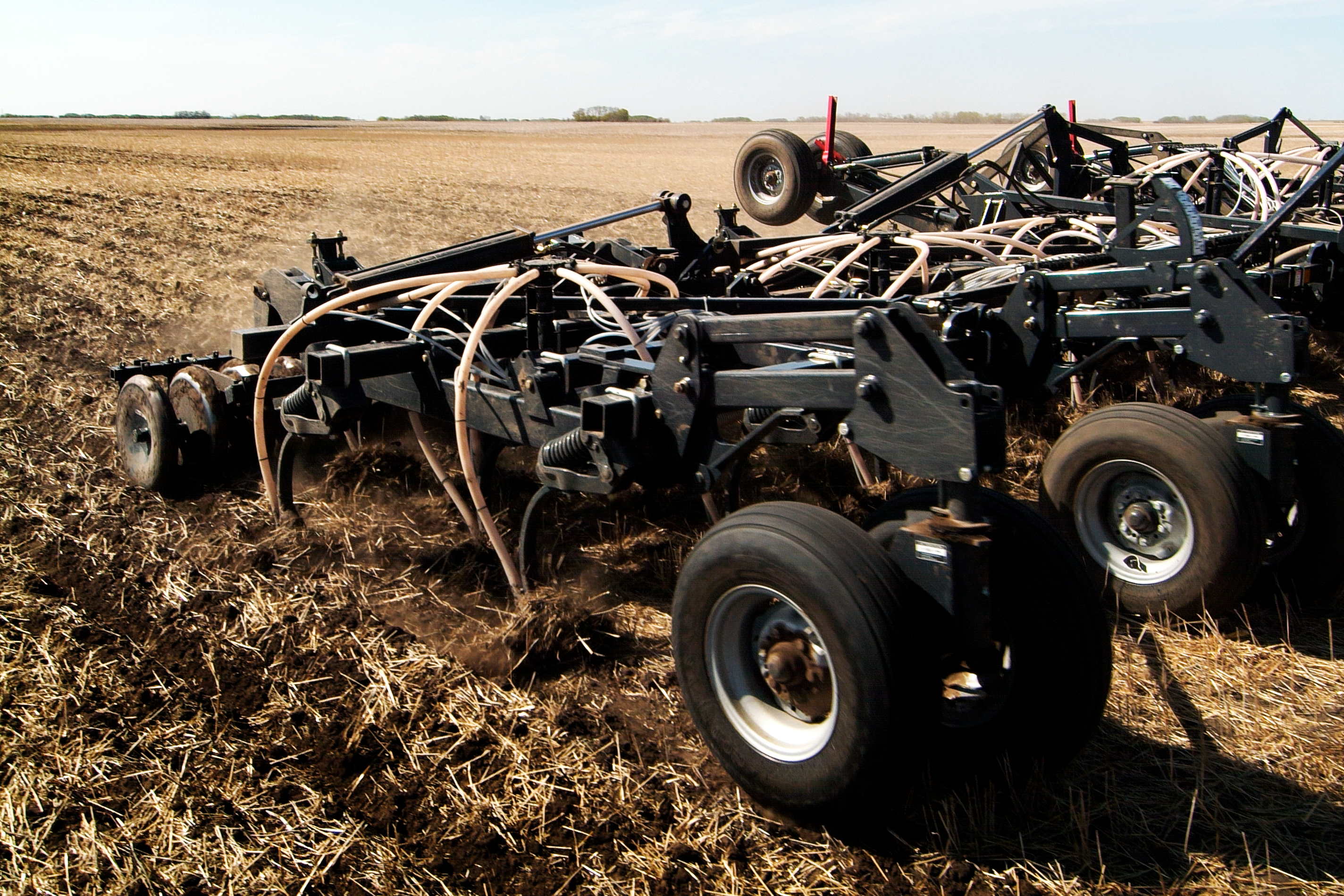By Brian Clancey, STAT Publishing
March 2023
Recent years have seen changes in global trading patterns, in big measure because of the 2021 drought which caused declines in pea, lentil, and chickpea production in both Canada and the United States (U.S.).
As a result, prices rise rapidly in both grower and export markets because of the need to ration what was available among the various markets. Average prices paid to farmers during the 2021/22 marketing year reached record highs for small green lentils and yellow and green peas, and were close to their all-time highs for red and large green lentils as well as chickpeas.
Because the drought also affected yields in key lentil, pea, and chickpea-growing areas in the U.S., Canada saw an increase in North American domestic demand. This reduced how much product was available for shipment to other parts of the world. It also helped draw down residual supplies, with the result of last summer’s carryovers from the previous marketing year dropped from the previous year.
Peas
The most obvious impact of high prices and limited supply was the loss of the feed pea market in China and a sharp drop in shipments to the Indian subcontinent.
Many of those buyers have come back. Canada is once again exporting good quantities of peas to Bangladesh and Pakistan, though movement to the U.S. since the start of the crop year has dropped because of the recovery in its harvest from around 393,000 tonnes in 2021 to almost 693,000 last year.
Movement to China appears to be mainly for human consumption. Despite a recovery in hog production, it is unlikely that the country’s feed manufacturers will show much interest in peas unless prices are more competitive with other ingredients. At the same time, China is trying hard to increase grain and soybean output in an effort to reduce its reliance on imports.
Due to the Ukraine war, hopes that sanctions against Russia would result in demand for Canadian peas for livestock feed purposes have not materialized. Russia remains one of the biggest suppliers of peas to Italy and Spain, with Canadian-origin product largely bought for human consumption purposes.
India’s policies with respect to pea imports are not expected to change. However, some of the peas imported by countries like Bangladesh find their way into India. This season’s lower average export asking prices and improved availability of peas have stimulated demand from that country.
India’s total import needs are expected to be higher during the 2023 calendar year than was the case in 2022. Land in all pulses has declined from 78.0 million (M) acres (ac) last year to 75.4 M ac, similar to the combined kharif and rabi season plantings in 2020. Judging from India’s first kharif production estimates, total pulse output could fall from 27.7 to 24.7 M tonnes, suggesting imports of all pulses could advance from 2.5 to 2.7 M tonnes in 2023.
Unofficial imports would be expected to be larger due to cross-border movement from Bangladesh. The need for peas stems from a disappointing tur or pigeon harvest and reduced chickpea plantings, which indicate that harvest will be lower.
Chickpeas
There is no breakdown available between desi and Kabuli-type chickpeas. Even so, there is the potential for India’s Kabuli harvest to be at least the same as last year. This suggests the country will remain a relatively aggressive exporter of chickpeas in 2023, setting the market tone in advance of Mexico’s harvest.
India’s export focus for chickpeas appears to be some destinations on the Indian subcontinent, parts of Africa, and the Middle East, whereas Canadian exporters focus on the U.S., Pakistan, and some European buyers. The net result is while India influences global values for chickpeas, it is generally not a direct competitor.
Given our export focus, we face more direct competition from the U.S. and Mexico. Though the U.S. harvest increased last year, processors appear more focused on the domestic market, with Canada and Mexico plugging gaps. Unless U.S. farmers increase seeded area this year, that is unlikely to change, providing some underlying price and movement support through the coming marketing year.
Mexico sets the tone for Kabuli chickpea values because quality and size are in high demand from some key buyers in the world. This generally creates a ceiling under which values for other origins are determined. It also draws attention to output levels in that country. Unfortunately, there are significant differences of opinion over the size of its chickpea harvest and exportable surpluses.
It is worth noting that some market participants in Mexico believe the country has faced a fundamental shortage of some classes of dry edible beans this season. It remains to be seen if this had an influence on chickpeas planted for harvest this spring.
Similar to India, Australia mainly grows desi-type chickpeas. Its harvest sank from 1.1 M tonnes to 595,000 tonnes but because of a large carry-in from the previous marketing year, the available supply of all classes of chickpeas is little changed at an estimated 1.0 M tonnes. Though not a direct competitor with Canada, it will have an influence on the quantity and value of pulses Canada ships to the Indian subcontinent.
Lentils
More critical than chickpeas, is the Australian lentil harvest, which ended up at a record 1.1 M tonnes of mainly red. The country has the potential to export over one M tonnes in its 2022/23 marketing year, which runs from November through October.
Its exports have started the season on a strong pace with India, Bangladesh, and United Arab Emirates (UAE) being its key buyers. Australian asking prices have been strongly competitive with those from Canada, influencing both export asking prices and red lentil grower bids.
Even so, Canadian exports have maintained a strong pace since the start of the marketing year and are on pace to finish the marketing year in what is considered sold out. Despite that, there is a sense seeded area could be down this spring, but this is unlikely to affect Canada’s ability to maintain exports at a relatively strong pace well in 2024.
The only worry is that increased lentil production in India this year could have reduced its import needs after March. However, that country’s fundamental import needs will remain strong and red lentils remain one of the best-priced readily available pulses in the world.
Global demand for red lentils, peas, and chickpeas is unlikely to significantly change through to at least 2024, but the mix of competitors and destinations is expected to continue changing.
Canada – Seeded Area Summary and Forecasts
| Area (acres) | 2018 | 2019 | 2020 | 2021 | 2022 | 2023 | 5-Year Average |
|---|---|---|---|---|---|---|---|
| Lentils | 3,768,100 | 3,780,500 | 4,232,800 | 4,200,686 | 4,321,300 | 3,987,000 | 4,061,000 |
| Peas | 3,615,300 | 4,332,800 | 4,255,400 | 3,854,729 | 3,368,100 | 3,280,000 | 3,885,000 |
| Beans | 363,300 | 395,300 | 457,200 | 423,799 | 297,600 | 388,000 | 387,000 |
| Faba Beans | 81,100 | 93,100 | 99,200 | 121,394 | 72,300 | 93,400 | 93,000 |
| Chickpeas | 442,900 | 391,900 | 297,800 | 221,950 | 233,800 | 286,000 | 318,000 |
| Total | 8,270,700 | 8,993,600 | 9,342,400 | 8,822,558 | 8,293,100 | 8,034,400 | 8,744,000 |
Canada – Production Summary and Forecasts
| Production (tonnes) | 2018 | 2019 | 2020 | 2021 | 2022 | 2023 | 5-Year Average |
|---|---|---|---|---|---|---|---|
| Lentils | 2,192,100 | 2,382,000 | 2,867,700 | 1,593,640 | 2,300,598 | 2,243,000 | 2,267,000 |
| Peas | 3,580,700 | 4,236,500 | 4,594,300 | 2,243,770 | 3,423,266 | 3,047,000 | 3,616,000 |
| Beans | 367,000 | 327,900 | 489,800 | 363,573 | 312,994 | 369,000 | 372,000 |
| Faba Beans | 92,000 | 107,800 | 124,500 | 68,475 | 87,794 | 99,500 | 96,000 |
| Chickpeas | 442,900 | 391,900 | 297,800 | 221,950 | 233,800 | 286,000 | 318,000 |
| Total | 6,674,700 | 7,446,100 | 8,374,100 | 4,491,408 | 6,358,452 | 6,044,500 | 6,669,000 |
Canada – Carry-In Stocks Summary and Forecasts
| Carry-In (tonnes) | 2018 | 2019 | 2020 | 2021 | 2022 | 2023 | 5-Year Average |
|---|---|---|---|---|---|---|---|
| Lentils | 873,000 | 856,000 | 209,000 | 438,000 | 224,000 | 225,000 | 520,000 |
| Peas | 648,000 | 312,000 | 233,000 | 557,000 | 337,000 | 813,000 | 417,000 |
| Beans | 40,000 | 65,000 | 17,000 | 85,500 | 106,214 | 67,214 | 63,000 |
| Faba Beans | 15,000 | 7,000 | 16,000 | 43,964 | 21,609 | 19,818 | 21,000 |
| Chickpeas | 311,300 | 251,500 | 214,400 | 91,288 | 127,929 | 174,000 | 199,000 |
| Total | 1,887,301 | 1,491,500 | 689,400 | 1,215,752 | 816,752 | 1,299,031 | 1,220,000 |
Canada – Total Supply Summary and Forecasts
| Supply (tonnes) | 2018 | 2019 | 2020 | 2021 | 2022 | 2023 | 5-Year Average |
|---|---|---|---|---|---|---|---|
| Lentils | 3,065,100 | 3,238,000 | 3,076,700 | 2,031,640 | 2,524,598 | 2,468,000 | 2,787,000 |
| Peas | 4,228,700 | 4,548,500 | 4,827,300 | 2,800,770 | 3,760,266 | 3,860,000 | 4,033,000 |
| Beans | 407,000 | 392,900 | 506,800 | 449,073 | 419,208 | 436,214 | 435,000 |
| Faba Beans | 107,000 | 114,800 | 140,500 | 112,439 | 109,403 | 119,318 | 117,000 |
| Chickpeas | 754,200 | 643,400 | 512,200 | 313,238 | 361,729 | 460,000 | 517,000 |
| Total | 8,562,001 | 8,937,600 | 9,063,500 | 5,707,160 | 7,175,204 | 7,343,531 | 7,889,000 |
Canada – Export Summary and Forecasts
| Exports (tonnes) | 2018 | 2019 | 2020 | 2021 | 2022 | 2023 | 5-Year Average |
|---|---|---|---|---|---|---|---|
| Lentils | 1,645,557 | 2,737,297 | 2,341,746 | 1,609,730 | 2,089,000 | 2,066,000 | 2,085,000 |
| Peas | 3,278,253 | 3,718,267 | 3,597,837 | 1,917,150 | 2,394,000 | 2,603,000 | 2,981,000 |
| Beans | 344,574 | 354,421 | 390,728 | 318,892 | 316,000 | 342,000 | 345,000 |
| Faba Beans | 39,500 | 29,954 | 17,908 | 18,003 | 15,800 | 24,300 | 24,000 |
| Chickpeas | 149,501 | 107,376 | 163,513 | 179,222 | 176,500 | 121,100 | 155,000 |
| Total | 5,457,385 | 6,947,315 | 6,511,732 | 4,042,997 | 4,991,300 | 5,156,400 | 5,590,000 |
Based on Statistics Canada data. 2023 forecasts are by StatPub.com.
Brian Clancey is the editor and publisher of www.statpub.com market news website and President of STAT Publishing Ltd. He can be reached at editor@statpub.com.



